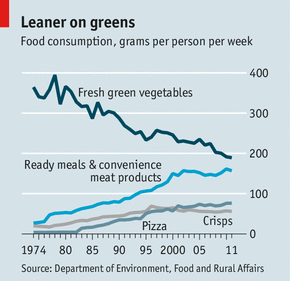The Relationship Between Diet, Exercise and Obesity
The Relationship between Obesity, Diet and Exercise: Why Understanding is Key
Obesity is on the rise it seems, so it was with great interest that the results of a recent Oxford University survey were digested in the Daily Mail, as this study explored obesity as a global issue and highlighted the worst affected areas.
The results for the UK were particularly interesting, as while the nation recorded results far below the worst performing regions (such as American Samoa with a 75% obesity rate) its level of 27% was among the worst in Europe.
I was surprised at some of the stats, particularly in the middle east – I had no idea that there were such high levels of obesity there (although one of my clients, Suzi, told me about the ‘Dubai stone’ that everyone gains when they move there, as takeaways are so cheap and plentiful!)
Oddly, gym memberships and fitness class participation is on the up, so what is going on?
Diet and Exercise: Are Fundamental Misunderstandings Causing an Increase in Obesity?
When you consider that the UK is an advanced nation, but that European neighbours such Italy and Sweden (also advanced nations) have obesity rates of less than 10%, it begs the question – why?
What has caused this inflated rate of obesity and a chronic lack of fitness?
Are we too sedentary in the UK? Is our consumption of cheaper, lower-quality food higher?
The answer to all of these questions is yes…
The result is resoundingly clear – our diets are worse. There are far fewer vegetables being consumed and more ‘junk’. Activity habits have also changed, meaning our calorie expenditure has reduced significantly. Seen through those eyes, the answer to the question is obvious.
On the continent, diets are better. Activity levels are generally higher. Meal times play a greater significance in daily life, with families getting together to prepare good quality, healthy meals. Seasonal eating is also fundamental – in Italy in particular, they eat what they can grow. Here we import a lot of our food all year round, meaning that although we may be eating fruit and vegetables, we often aren’t eating them at their best.
Add to the issue the long hours we work, the lack of well-enforced lunch breaks etc, we realise the answer to the ‘why are we fatter than other countries?’ question isn’t a clear cut one.
While there may be many potential triggers, it is also possible that people are suffering from a fundamental misunderstanding of the relationship that exists between diet and exercise. Healthy living relies on both a balanced diet and a relatively active lifestyle,
To understand this further, let’s consider the demographic of enthusiastic but inexperienced gym users. There is a belief from some people that if they go to the gym, they can eat what they like, not realising that in order to lose weight you have to create a calorie deficit and exercise is part of that. I have known gym users leave the gym and get a KFC on the way home – no exaggeration!
Tailoring your Diet to Fuel your Exercise
For those with a general fitness regime and a wish to lose weight, the key is to develop a balanced and healthy diet that fuels regular, daily exercise but maintains a calorie deficit. If you have a light fitness regime, you simply can’t afford to consume a large amount of calories as your body simply doesn’t require them.
The harder you work, the more calories you can afford to eat. In case you were wondering, this is what hard work looks like…
An increase in calories is important if your goal is to build muscle, but importantly those extra calories should come from healthy sources, not by shovelling any old crap down your throat in the pursuit of simply hitting a calorie goal.
From an exercise perspective, it is also important to develop a regime that you are comfortable with and fully equipped for. This not only applies to the type of cardiovascular and conditioning exercises that you undertake, but also the equipment and clothing that you invest in. Retailers such as the Skate Hut represent something of a one-stop shop for sports and fitness enthusiasts, and enable you to exercise in comfort without being forced to compromise on performance.
So, here is a quick start weight loss guide for beginners…
1. Keep an eye on your caloric intake.
The only thing that will help with your belly fat is getting leaner. To get leaner you’re going to have to burn more energy than you consume for an extended period of time. By keeping an eye on your calorie intake at the start, you have an idea of exactly what you are eating.
2. If you are thinking about food a lot, stop snacking.
Eat 3-5 meals per day and remove snacks from the equation, especially calorie dense ones such as nuts. For some people (me included) snacking just promotes hunger.
3. Make sure you are hydrated.
Dehydration can often be misinterpreted for hunger cues, so keep yourself topped up with water. Additionally, water is vital for many biological processes and helps with fat loss.
4. Choose foods that are minimally processed.
Minimally processed foods include meat, fruit and vegetables – foods that haven’t been tampered with, pre-cooked, boxed, tinned, bagged etc. Consume whole foods 80% of the time and leave some flexibility for the other 20%, it’ll massively take the stress out of dieting.
5. Exercise.
Base most of your training around weight training and top the rest up with bursts of high intensity cardio. Aim for 3-5 sessions per week, no more. Build up your tolerance to exercise. If you are stuck, hire a personal trainer for help.
There you go – how not to be another obesity statistic, in a quick guide!

